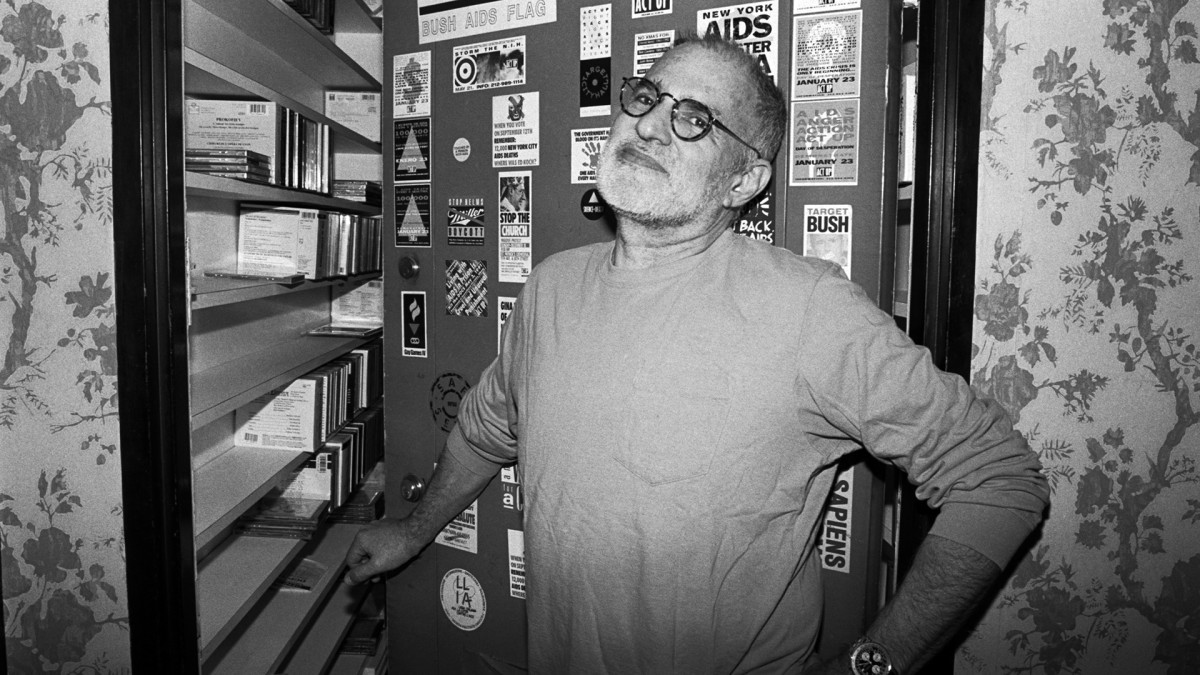By the year 1987, the AIDS epidemic had reached grim proportions. The disease had killed almost 60,000 people worldwide, and more than 40,000 were HIV-positive in the United States alone. The majority of those ravaged by the disease were gay men. Despite mounting cases and deaths, President Ronald Reagan had not said the word AIDS in public until September 1985.
To many, it seemed like the U.S. government had been willfully ignoring what had grown into a global health emergency.
“In the history of the AIDS epidemic, President Reagan’s legacy is one of silence,” AIDS activist Michael Cover said in a June 8, 2004 SFGATE editorial. “It is the silence of tens of thousands who died alone and unacknowledged, stigmatized by our government under his administration.”
AIDS was viewed as a gay disease, and it seemed the community was on its own to fight it. Fight is what they did—and the work of ACT UP and many activists paved the way for breakthroughs in patients’ rights.
ACT UP Takes Aim at Improving Health Care

American playwright and activist Larry Kramer poses for a portrait at the open door of his apartment in April 1993 in New York City.
Catherine McGann/Getty Images
In March 1987, AIDS activist Larry Kramer and others formed the AIDS Coalition to Unleash Power (ACT UP). The group was made up of people with no rights, facing a disease with no cure, who had been abandoned by their families, their government, and their society, notes author and activist Sarah Schulman in Let the Record Show: A Political History of act up New York, 1987-1993. It was loosely organized as a confederacy of affinity groups—each with their own special set of talents—and that expertise contributed to its tremendous impact.
ACT UP is often remembered for its most dramatic moments, from wrapping North Carolina Senator Jesse Helms’ home in a giant yellow condom to disrupting mass at St. Patrick’s Cathedral to dumping the ashes of AIDS victims on the White House lawn. While these were powerful visuals, the organization’s core focus was on improving patient-centered care.
ACT UP was one of the first groups to propose designing healthcare solutions based specifically on the population being treated. They brought high-quality care to the streets, treating underserved people with AIDS, finding shelter for the unhoused and protecting IV drug users through needle exchanges.
The group also challenged the healthcare industry. Decades ahead of the Affordable Care Act, they fought for changes in state insurance laws and called out exclusionary policies against gay men. ACT UP played a lead role in pushing government agencies and drug companies to accelerate testing, lower costs of drugs and bring people with HIV/AIDS into the care design process.
“We have to break down the cult of experts in every area of this society,” said Mark Harrington of ACT UP, in the 2012 documentary, “United in Anger: A History of ACT UP.” “People with AIDS are the experts on this disease.”
The notion of patient-centered care was not new to U.S. healthcare, but the AIDS crisis injected an urgency behind the principle.
“Before AIDS and before ACT UP, all experimental medical decisions were made by physicians,” Dr. Anthony S. Fauci, longtime director of the National Institute of Allergy and Infectious Diseases, told the New Yorker magazine in 2002. “Larry Kramer, by assuring consumer input to the FDA, put us on the defensive over our appropriations. ACT UP put medical treatment in the hands of patients. And that is the way it ought to be.”
WATCH VIDEO: Actor Rock Hudson Dies of AIDS
Scroll to Continue
AIDS Activists Fight for Access to Experimental Drugs
ACT UP’s members argued that patients deserved access to experimental drugs, even if they were not yet FDA-approved and that during a national crisis, access to new therapies and innovative care must be everyone’s right.
“I would rather take my chances with the side effects of an experimental drug,” AIDS activist Vito Russo told the Ottawa Herald in October 1988. “The side effect of AIDS is death.”
ACT UP’s Treatment and Data Committee, otherwise known as the “Science Club,” studied the Food and Drug Administration’s operation inside and out, Schulman recounts. Eventually, they came to understand FDA processes, policies and systems. They analyzed experimental drugs, clinical trials and emerging treatments long before they came up for approval.
In 1988, ACT UP published an FDA Action Handbook, conducted a series of teach-ins and distributed news like Hollywood releases. By giving the media advanced information, reporters had information long before their stories were broadcast or printed, and coverage tended to be more supportive.
On October 11, 1988, an estimated 1,500 ACT UP protestors disrupted the FDA headquarters in Rockville, Maryland. Crowds blocked access to doors, walkways and roads; launched smoke bombs; diverted office workers; and chanted protest songs, including “Hey, hey, FDA, how many people have you killed today?” They issued a set of demands, including shortening the drug approval process, offering free access to drugs after Phase 1 trials, discontinuing double-blind placebo trials—including people from all backgrounds and with all stages of HIV infection in clinical trials—and making Medicaid and private insurance accountable for paying for experimental drugs.
One year later, the “parallel track,” which allowed the early release of drugs and treatments to terminal patients who had exhausted all other options, was finally accepted by both the FDA and National Institutes of Health. Soon, a second antiretroviral drug became available. Many patients felt hope for the first time since their diagnosis.
Once only seen on angry picket signs, “Drugs into Bodies” became public healthcare practice. ACT UP had forced a shift in the way clinical trials were managed in the United States. The group’s pressure then focused and intensified on the pharmaceutical companies themselves.
The (Expensive) Debut of AZT
By the early 1990s, there was only one approved drug (azidothymidine/AZT), and its 25-month approval process was seen as impressively fast at the time. Many patients could not tolerate AZT, or the side effects it caused, yet no other viable option existed.
The pharmaceutical company Burroughs Wellcome had originally priced AZT at $10,000 per year (adjusted for inflation: $25,730.) Faced with a Congressional inquiry into price gouging, the company lowered the price to $8,000 per year, yet it remained the most expensive drug ever sold. Within two years, Burroughs Wellcome stock soared 40 percent. ACT UP and 15 other groups met with Burroughs, who would not budge. In response, ACT UP called for a nationwide boycott of all Burroughs products, which they labeled with “AIDS profiteer” stickers in stores.
By September 14, 1989, more Americans had died of AIDS-related causes than in the Vietnam War. America had reported its 100,000th case of AIDS and predicted another 100,000 within one year. Seven ACT UP members chained themselves to the VIP balcony at the New York Stock Exchange, calling out the company for crisis profiteering. Within weeks of the protest, Burroughs Wellcome reduced the price of AZT to $6,400 per year, claiming that they had planned to do so all along.
Accelerating Research
ACT UP challenged every aspect of care design and delivery. Many NIH trials for AIDS drugs required that patients cease all other medications—including the medications that were keeping them alive. As a result, many trials did not advance to approval, resulting in a limited selection and supply of proven AIDS drugs. ACT UP’s members demanded change.
“Crucial studies of drugs for opportunistic infections that were proposed two or three years ago have not yet begun because of opposition from key executive committee members, while tens of thousands of people with AIDS have died of these same infections,” argued Richard Lynn of ACT UP in 1990.
The Science Club focused its efforts on accelerating the pace of research. They fought against lawsuits that blocked the production of lower-cost, generic drugs, called for Congressional hearings into drug pricing and protested the pharmaceutical industry’s influence on elected officials. By 1996, thanks to patient-centered care initiatives, combinations of new antiretroviral drugs had changed the prognosis for people living with HIV, making it possible for people with the virus to live long, relatively healthy lives.
The changes fought for by AIDS activists left a lasting impact in approaches to health care, according to Allan M. Brandt, a professor of the history of medicine at Harvard University. “When the history of the HIV epidemic is eventually written,” wrote Brandt in the June 6, 2013 issue of the New England Journal of Medicine, “it will be important to recognize that without this epidemic there would be no global health movement as we know it today.”







